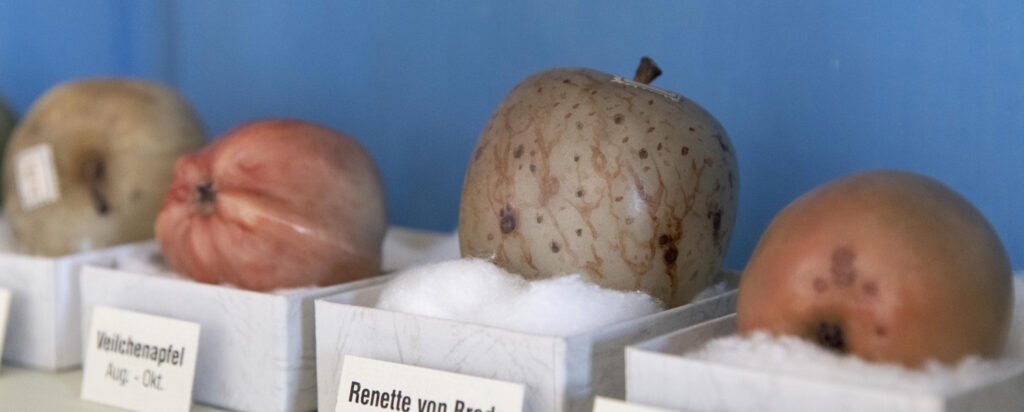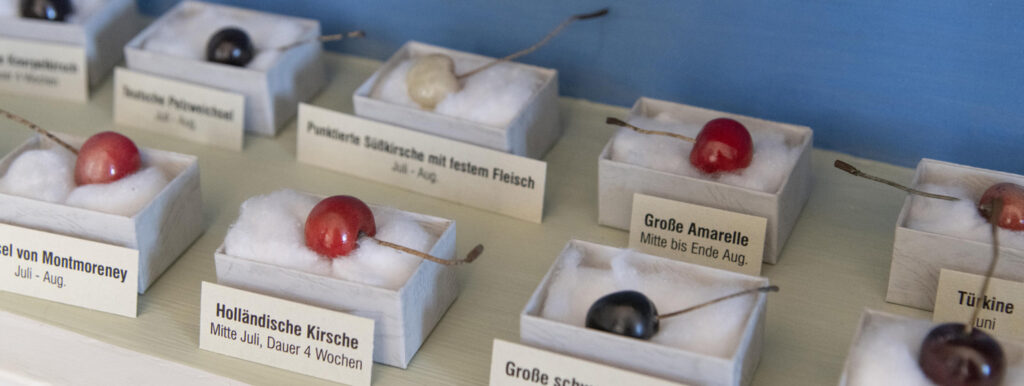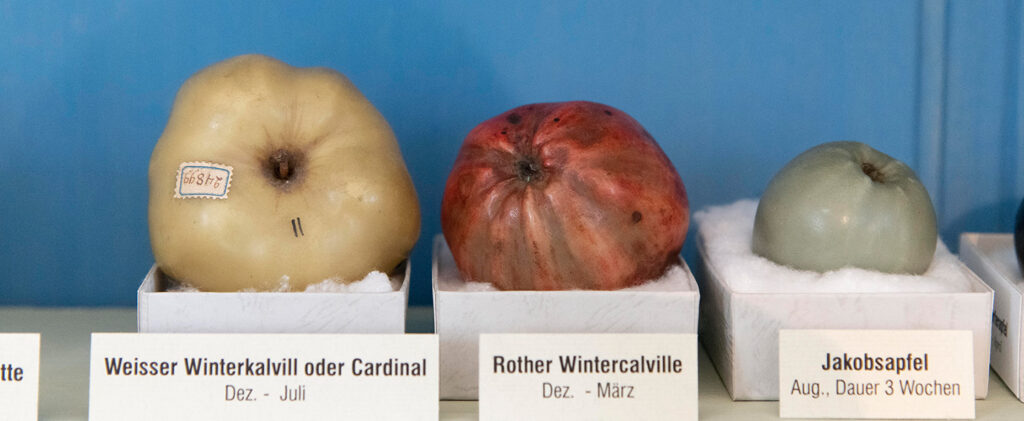Pomological Cabinet
The “Pomological Cabinet” is a collection of models of fruit varieties. Such collections were made from the 18th to the 20th century to document the appearance of particular varieties. Models of fruits were made by different vendors in many countries of Europe and also in the New World, using a wide variety of techniques and materials (examples: ” Arnoldi`s Obstkabinett” with 432 plaster models, made 1856-1897 in Gotha; “Wächserne Obstsammlung” of Father Constantin Keller with 245 preserved specimens in the Abbey of Admont/Austria, made 1815-1840; “Obstsortiment für Steiermark in plastischer Nachbildung” with 406 papier-mâché-wax models, probably 1880-1890).
The Pomological Cabinet of the Bamberg Natural History Museum originated from the production of the “Landes-Industrie-Comptoir” of the Weimar publisher Friedrich Justin Bertuch (1747-1822). There, the magazine “Der teutsche Obstgärtner” was published from 1794 to 1804, which was then replaced by the “Allgemeine teutsche Gartenmagazin” from 1804 to 1824. In these series, recommended fruit varieties were described in words and pictures, among other things. Responsible for the content was the then well-known Thuringian pomologist Pastor Johann Volkmar Sickler (1742-1820). In addition, the publisher had models of a total of 298 different fruit varieties, distributed among apples, pears, plums and damsons, cherries, apricots, peaches, as well as a nut and a medlar. The models were made by Ernst Heinrich Gebhardt. They were sold in 26 successive deliveries between 1795 and 1813.
The models are made of beeswax with a small admixture of Kremser white. The objects are hollow, with a wall thickness of about 1.5 – 2.5 mm. The fruit stalks are made of twisted and strengthened twine and overmolded with wax depending on the variety. The surface is painted with glazing colors true to nature.
Undoubtedly, the model series from the house of Bertuch is the most beautiful and lifelike fruit variety series that was available for purchase in the heyday of pomology at that time. Due to the extreme fragility of the hollow bodies, only a few collections have survived to this day. The Bamberg collection, with a total of 193 models, is one of the most extensive. In detail: 71 pears, 66 apples, 24 plums and damsons, 23 cherries, 6 peaches and 3 apricots. In addition to their cultural-historical value, the models are used to identify old varieties that have been forgotten. They also provide insight into the important and common fruit varieties of the time.
Literature: Mäuser, M. (1998): Das Pomologische Kabinett von F. J. Bertuch aus Weimar im Naturkunde-Museum Bamberg.- LXXII. Bericht Naturf. Ges. Bamberg: 49-78. Bamberg.





